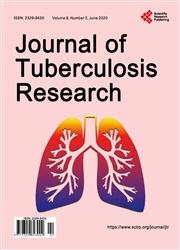Geo-Spatial Mapping of Tuberculosis Burden in Anambra State, South-East Nigeria
引用次数: 0
Abstract
Background: Anambra state in south-east Nigeria is one of the high TB burden states in the country. Despite recent improvements in TB case notification, estimates from the National Prevalence survey suggest that there is still a significant pool of missed TB cases in the state. Although active TB case finding interventions are needed at community level, information on local TB transmission hotspots is lacking. The objective of this study was to map the geo-spatial location of all TB cases detected in the state in 2019. Findings from this secondary data analysis will help to target interventions appropriately with a view to achieving better program efficiency. Method: A de-identified dataset containing descriptive physical addresses of registered TB cases in 2019 was developed. The dataset was then deconstructed and restructured using Structured Query Language in a relational data base environment. The validated dataset was geocoded using ArcGIS server geocode service and validated using python geocoding toolbox, and Google geocoding API. The resultant geocoded dataset was subjected to geo-spatial analysis and the magnitude-per-unit area of the TB cases was calculated using the Kernel Density function. TB case notification rates were also calculated and Choropleth maps were plotted to portray the TB burden as contained in the dataset. Results: Five local government areas LGAs (Onitsha North, Onitsha South, Idemili North, Nnewi North, Ogbaru) had spots with “Extremely high” burden with two LGAs (Onitsha North and South) accounting for the largest spots. Eight LGAs had spots with “Very high” TB burden. Also, 24 hotspots across the state had “High” TB burden and two LGAs (Orumba North, Orumba South) had only “Low” TB burden areas. Conclusion: Visualizing the heat map of TB patients has helped to identify transmission hotspots that will be targeted for case finding interventions and effort should be made to increase sensitization of the people on certain behavioural attributes that may contribute to contracting Tuberculosis.尼日利亚东南部阿南布拉州结核病负担的地理空间测绘
背景:尼日利亚东南部的阿南布拉州是该国结核病负担最重的州之一。尽管最近结核病病例通知有所改善,但全国流行率调查的估计表明,该州仍有大量遗漏的结核病病例。尽管需要在社区一级采取积极的结核病病例发现干预措施,但缺乏关于当地结核病传播热点的信息。这项研究的目的是绘制2019年该州检测到的所有结核病病例的地理空间位置图。二次数据分析的结果将有助于适当地针对干预措施,以提高项目效率。方法:开发了一个未识别的数据集,其中包含2019年登记结核病病例的描述性物理地址。然后在关系数据库环境中使用结构化查询语言对数据集进行解构和重构。经验证的数据集使用ArcGIS服务器地理编码服务进行地理编码,并使用python地理编码工具箱和Google地理编码API进行验证。对生成的地理编码数据集进行地理空间分析,并使用核密度函数计算TB病例的单位面积大小。还计算了结核病病例通知率,绘制了Choropleth图,以描绘数据集中包含的结核病负担。结果:五个地方政府区域LGA(Onitsha North、Onitsha South、Idemili North、Nnewi North、Ogbaru)的负荷“极高”,其中两个LGA(奥尼察North和South)的负荷最大。八个地方政府机构的结核病负担“非常高”。此外,全州24个热点地区的结核病负担“高”,两个地方政府(奥伦巴北部和奥伦巴南部)的结核病负担只有“低”地区。结论:可视化结核病患者的热图有助于确定将成为病例发现干预措施目标的传播热点,应努力提高人们对可能导致感染结核病的某些行为特征的敏感性。
本文章由计算机程序翻译,如有差异,请以英文原文为准。
求助全文
约1分钟内获得全文
求助全文

 求助内容:
求助内容: 应助结果提醒方式:
应助结果提醒方式:


